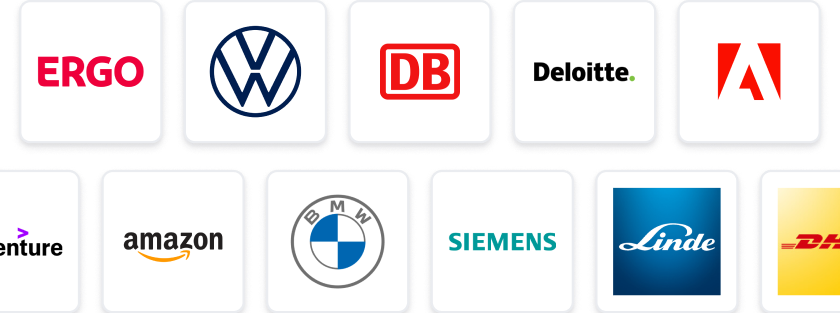At a Glance
- Tasks: Join a dynamic team to develop cutting-edge IoT hardware and cloud solutions.
- Company: Be part of a pioneering manufacturing company leading the IoT revolution across the Atlantic.
- Benefits: Enjoy a competitive salary up to £40,000 p/a and opportunities for professional growth.
- Why this job: This role offers a chance to innovate and collaborate in a tech-driven environment.
- Qualifications: Experience in IoT, Networking, or Hardware is essential; familiarity with AWS or Azure is a plus.
- Other info: Work from the Leicestershire office and engage with both technical and non-technical teams.
IoT Platform Engineer – Hardware & Cloud
Applying for this role is straight forward Scroll down and click on Apply to be considered for this position.
A chance to work with a company working on the cutting edge of technology, in what is a pivotal role for the client\’s industry leading IoT solution.
This role would suit someone with a few years of relevant experience that is looking to move into a new environment.
Based out of the clients Leicestershire office.
Salary up to £40,000 p/a (negotiable).
To apply please call (phone number removed) or email
Who is the client?
Our client is a pioneer in the manufacturing industry who are based on both sides of the Atlantic. They are committed to leading the way within their own specific industry by utilising the technology available and as part of that the Internet of Things revolution is huge. As such they need to bring in an engineer who can be the pivot between the technical and non-technical teams ensuring that this is done as effectively and efficiently as possible.
What will you be doing?
Working in collaboration with teams through out the business, to understand business needs, you will be responsible for hardware and cloud solutions, as well as being an IoT SME, project planning, and being a technologist who embraces new techniques and tools as they come. You\’ll be expected to lean on your experience of working with Networking tools and Hardware within the cloud to deliver this.
What you will need…
Experience of working with IoT or on IoT projects.
A background in Networking or Hardware.
Asana
Cloud platforms (AWS or Azure)
Microservice and Containerisation tools
What it would be nice to have…
Previous experience of working in a planning or co-ordination role
Figma
K8\’s
The ability to work on your own.
Superb communication and organisation skills.
To apply…
Please either apply online or email me directly at (url removed). For more information, feel free to call me on (phone number removed). By applying, you consent to us processing your details for this vacancy only. We look forward to hearing from you!
Key Skills – IoT, Cloud, Networking, Hardware, AWS, Azure
IoT Hardware & Platform Engineer employer: Searchability (UK) Ltd
Contact Detail:
Searchability (UK) Ltd Recruiting Team
StudySmarter Expert Advice 🤫
We think this is how you could land IoT Hardware & Platform Engineer
✨Tip Number 1
Familiarise yourself with the latest trends in IoT technology. Being knowledgeable about current advancements and tools will not only boost your confidence but also impress the interviewers, showing that you're genuinely interested in the field.
✨Tip Number 2
Network with professionals in the IoT space. Attend industry meetups or online webinars to connect with others who work in similar roles. This can lead to valuable insights and potentially even referrals for the position.
✨Tip Number 3
Prepare to discuss specific projects you've worked on that relate to IoT, Networking, or Cloud platforms. Be ready to explain your role, the challenges you faced, and how you overcame them, as this will demonstrate your hands-on experience.
✨Tip Number 4
Showcase your communication skills during any interactions. Since the role involves collaboration between technical and non-technical teams, being able to articulate complex ideas clearly will be a significant advantage.
We think you need these skills to ace IoT Hardware & Platform Engineer
Some tips for your application 🫡
Understand the Role: Before applying, make sure to thoroughly read the job description. Understand the key responsibilities and required skills for the IoT Hardware & Platform Engineer position to tailor your application accordingly.
Highlight Relevant Experience: In your CV and cover letter, emphasise your experience with IoT projects, Networking, and Hardware. Be specific about your previous roles and how they relate to the requirements of this position.
Showcase Technical Skills: Mention your familiarity with cloud platforms like AWS or Azure, as well as any experience with microservices and containerisation tools. This will demonstrate your technical proficiency and suitability for the role.
Craft a Compelling Cover Letter: Write a cover letter that not only outlines your qualifications but also expresses your enthusiasm for the company and the IoT industry. Make it personal and engaging to stand out from other applicants.
How to prepare for a job interview at Searchability (UK) Ltd
✨Showcase Your IoT Experience
Make sure to highlight any relevant projects you've worked on in the IoT space. Be prepared to discuss specific challenges you faced and how you overcame them, as this will demonstrate your hands-on experience and problem-solving skills.
✨Understand the Company’s Technology Stack
Familiarise yourself with the technologies mentioned in the job description, such as AWS, Azure, and networking tools. Showing that you have a solid understanding of these platforms will impress the interviewers and show your commitment to the role.
✨Prepare for Technical Questions
Expect technical questions related to hardware and cloud solutions. Brush up on your knowledge of microservices, containerisation tools, and any relevant networking concepts to ensure you can answer confidently.
✨Demonstrate Communication Skills
Since the role involves collaboration between technical and non-technical teams, be ready to showcase your communication skills. Provide examples of how you've effectively communicated complex technical information to non-technical stakeholders in the past.
